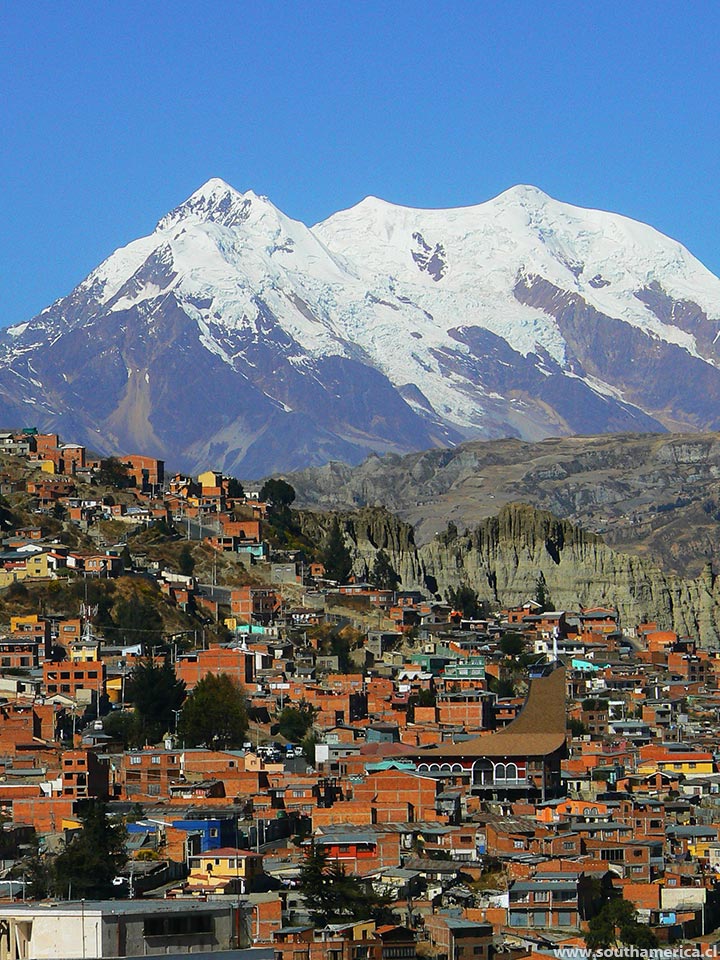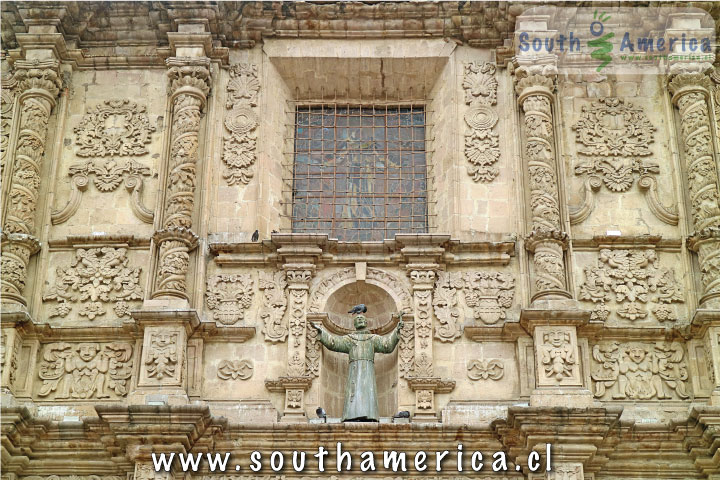La Paz
Bolivia

La Paz, the capital of Bolivia is the highest capital city in the world. It takes most people a while to acclimatize to the altitude, especially when they have flown in.
La Paz has no defined backpacker's hangout area, but there is a lot on offer for tourists in the way of accommodation, places to eat and sights; generally along the street Illampu and the surrounding area.
There are few main attractions within the city, only enough to occupy you for a day or so, including a few museums, wandering around the outdoor markets, and taking time to book guided excursions.
What to Do in La Paz
Museo de la Coca (Coca Museum): This museum has some really interesting stuff and is actually different from other museums in South America and with a topic you actually want to learn about. We think it is well worth your while and is located on the street Linares among the endless markets. They have plans to move it to a new location and upgrade everything soon... but we aren't sure how soon that will actually be.
It starts with a historical and scientific explanation of the productions and consumption effects of this controversial plant. The coca leaf has been primarily chewed for thousands of years by the indigenous Bolivians, generally agreed to date back to at least to the sixth century A.D. Coca has been used in Bolivia for medicinal purposes, foremost as a stimulant to overcome exhaustion, hunger and thirst. It was also used as an anaesthetic to alleviate the pain of rheumatism, wounds, sores, broken bones, sore eyes, childbirth and during operations on the skull, as well as altitude sickness. It was given as an offering to the gods and as gifts in many important social bonding ceremonies. With the arrival of the Europeans it was prohibited by the Catholic church (they called it the Devil's weed). After realizing that the workforce was more productive with chewing of the coca leaf and some deliberation, Philip II of Spain issued a decree recognizing the drug as essential to the well-being of the Andean Indians but urging missionaries to end its religious use. The Spanish are believed to have effectively encouraged use of coca to increase their labour output and tolerance for starvation, but it is not clear if it was planned deliberately.
The museum also touches on the extraction of cocaine and the use in modern societies, as well as the role it plays today in Bolivian culture and international economics and politics. There are a number of interesting facts thrown in along the way.
Plaza Murillo: This square is dedicated to Don Domingo Murillo, leader of the 1809 revolution. In the middle of the plaza there is a monument that immortalizes the memory of those killed fighting for the country. Around the plaza you will find the Presidential Palace, the Congressional house and the Cathedral (Inside the Cathedral is the Museo de Arte Sacro).
Catedral de Nuestra Señora de la Paz: Constructed in the year 1831, this cathedral was made in the neoclassical style. The interior columns that hold up the building are in the Corinthian style. The plans for the church were done by Antonio Camponovo.
Basilica of San Francisco: Originally built in the 16th century, it had to be rebuilt in the 18th century due to the original church collapsing because of snowfall. It is located in the center of the city in the square that bears its name, Plaza San Francisco. Notice the detail of the carved facade (in the photo below).
Templo de Santo Domingo: The baroque facade was made entirely of wood in the 17th century. However, the interior was decorated in the 19th century in the neoclassical design. It makes for an interesting mix in one church.
Mercado de Brujas (Witches Market): Everything you need for traditional remedies for whatever sickness you might have, as well as artisan trinkets which are some of the best in the area. Located in the colonial area of the city at the corner of Sagárnaga and Linares. You will be surprised by what you will come across here.

Shopping
For those of you not accustomed to bargaining, here is a good place to try it out. Remember that the economy is very different here from back home, so a good general rule is to cut prices in half of what they would normally be in your home country. If the starting price in an outdoor market is 80 bolivianos you can normally bargain down to around 50 bolivianos or less, depending on how desperate you are for this particular item, or how desperate the vendor is to be rid of it. Bargaining is part of the culture, so don't feel that you are being rude by asking for a lower price; also as a foreigner with little knowledge of the actual price they will try to take you for as much as they can. Take the time to roam around first and get a feel for the price before you start purchasing.
Shopping around for travel agents is also a good idea. Generally the travel agents do not put together their own tours to the salt flats, but rather lump all the people in together. The quality of the tour, food or accommodation doesn't actually vary much with price, rather, the price varies depending on the amount of commission given to the agent. We recommend going with the lowest number you find. Trust us, you'll be proud when you talk to other tourists and realize how much more they paid for the exact same trip.
Where to Eat in La Paz
All around Plaza Juariste Eguina there is incredibly cheap food, ranging from your typical hamburger to traditional Bolivian cuisine. Jeremy thinks he ate intestines mixed in with maize...but we can't be sure what it was.
There are several street vendors with trolleys selling ice cream throughout the day.
Tours of Salar de Uyuni
All the agencies in La Paz offer the same exact itinerary for the tour of the Salar de Uyuni (the Salt flats), the only real difference being the price you pay.
If you found this guide about La Paz, Bolivia interesting or useful, let others know about it.


